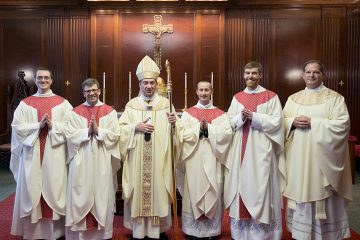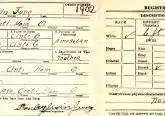What is Genealogy?
If you have Catholic ancestors, many of your families’ “who, what, where, when and why” have been recorded since the late 16th century. Church records help link children to parents— which is exactly what genealogists seek to do when researching family lineage. Imagine the thrill of tracing your family through history and discovering how their Catholic faith endured throughout the ages. This new column series aims to help you do just that.
WHERE TO BEGIN?
Genealogy is the study of family origins and history. It is about recreating ancestral lives through the “stories” or folklore handed down and the clues family left behind. It involves documenting relationships between individuals across generations.
It matters because it preserves our heritage: By recording names, dates and stories, the past isn’t forgotten. It provides a sense of belonging by bridging the gaps between generations, and accurate storytelling reveals the events, struggles and triumphs that shaped our lineage.
However, genealogy isn’t just about names and dates; it’s also a spiritual journey. In the book of Genesis, Scripture states that each human is created “in the image of God” (Gen. 1:27). The Bible itself contains numerous genealogies that serve multiple purposes. By connecting events and people across generations, the Bible emphasizes that the events involved real individuals, and this authenticates the continuity of officeholders, such as priests and kings.
Long before many governments kept civil records, Roman Catholic clergy dutifully recorded names and dates for major life events. This Catholic collection comprises baptisms, confirmations, marriages and burial records from thousands of parishes around the globe. Catholic records are among the most important in the world because of the standard level of family detail—some as distant as the late 1500s.
Copies of baptism, marriage and burial registers from every open and closed parish within the Archdiocese of Cincinnati are stored in the archdiocesan archives. Before reaching out to
archive staff, however, you need a few details to get the most from the the sacramental records. This column will guide you through your own family genealogy research.
WHERE TO BEGIN YOUR GENEALOGY RESEARCH
Establish a goal: Complete a three or four-generation ancestral pedigree chart. Download free ancestral charts from sites such as Ancestry.com. Also print other provided forms for future tasks. Because it is key to be organized from the beginning, label sections in a binder with each surname in your family.
STEPS TO ENTER INFORMATION IN A GENERATION ANCESTRAL PEDIGREE CHART:
- Focus on yourself, your parents, grandparents and great-
- Record
- Write surnames in capital letters. If you know a middle name, enter it. List women’s maiden names, not their married names; enter a question mark or leave blank if it is unknown.
- Record nicknames by annotating them in quotation
- List your information on the first Your father will be listed on the second line and your mother on the third. All paternal names will be with even numbers and maternal names with odd numbers.
- Include dates, locations and significant life events (birth, marriage and death). Enter the dates as day/month/ full year. Since many American genealogists list dates as month/day/full year, avoid confusion by abbreviating the month rather than using a numeral (05 JAN 1823).
When the first goal is completed, set new goals to expand. The initial ancestral chart is the foundation for all your future research. Looking to next month: Let the Scavenger Hunt begin in your home! Search for documents such as birth and death certificates, family Bibles and more.
 Ruthy Trusler is a communication consultant with a passion for genealogy. For over 20 years, she has helped families document their ancestry and write their family legacies.
Ruthy Trusler is a communication consultant with a passion for genealogy. For over 20 years, she has helped families document their ancestry and write their family legacies.
This article appeared in the January 2024 edition of The Catholic Telegraph Magazine. For your complimentary subscription, click here.














